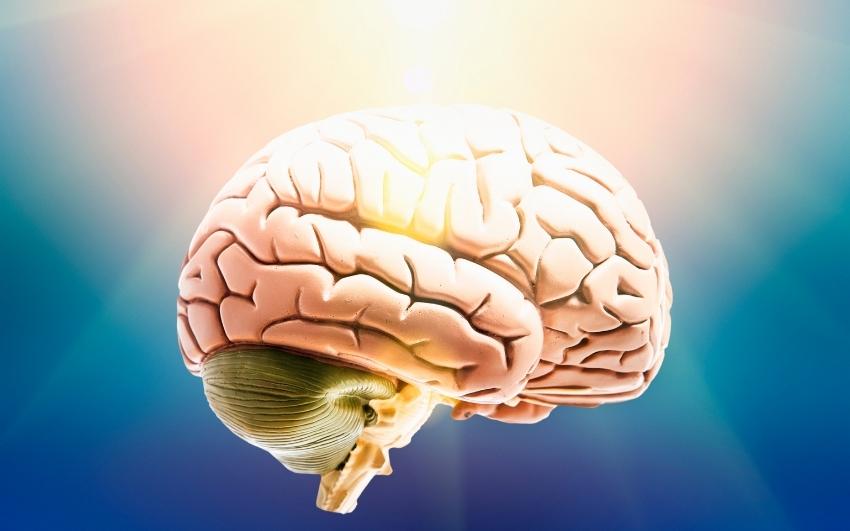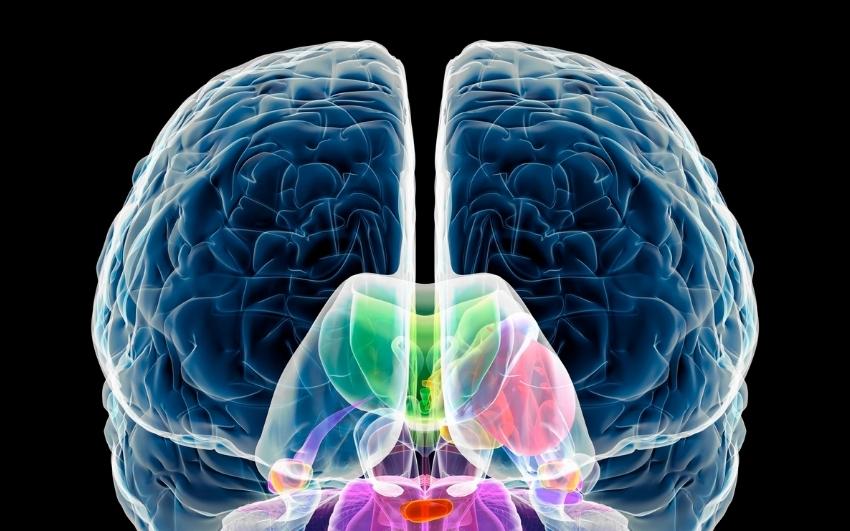
These scientific facts debunk many brain misconceptions. For the better (or worse), learn how the brain functions. All data are based on primary sources.
There are many human brain statistics and “facts” floating around that aren’t true.
It’s somewhat rational; studying the human brain is one of science’s least explored fields.
Even experts agree that we still have a lot to learn about the brain compared to what we know.
Our understanding of the brain has exploded in recent years.
The majority of what we know about the brain has been discovered in the last 15 years, and it’s predicted that a new medical discovery takes 17 years to go mainstream.
As a result, many brain facts haven’t gotten widespread exposure yet.
We’ll be updating this piece as new data becomes available.
Table of Contents
Critical Facts And Brain Statistics
The human brain is a unique and complex organ, responsible for everything from processing sensory information to governing motor skills.
- The brain accounts for approximately 2% of the body’s total weight, but it consumes 20% of its total energy and oxygen.
- On average, the human brain is around 73% water. Only 2% of dehydration can impact your attention, memory, and other cognitive skills.
- The brain contains billions of neurons, which are interconnected via synapses. These neurons communicate with each other by sending electrical impulses down their axons. The electrical signals are then transmitted across the synapses to the dendrites of other neurons.
- The human brain consumes a lot of energy – around 20% of the body’s total energy intake. This high level of energy consumption is necessary to maintain the Brain’s high level of activity.
- A lack of oxygen to the brain can be deadly. Even a few minutes without air can harm some brain cells, resulting in significant damage.
Human Brain Facts and Statistics

The most sophisticated example of intellect that we know dwells within our skulls. Here are some fantastic numerical facts about the human brain.
- The brain accounts for approximately 2% of the body’s total weight, but it consumes 20% of its total energy and oxygen.
- Your brain is made up of around 73% water. Only 2% of dehydration can impact your attention, memory, and other cognitive skills.
- Sweating for 90 minutes can shrink the brain to the same degree as one year of ageing.
- The brain weighs about three pounds and has 60 % of the body’s fat content. The brain is the fattiest organ in the body, with 60% of its weight coming from fat.
- The brain contains 25% of the body’s cholesterol. Cholesterol is essential for every brain cell. Brain cells die if there isn’t enough cholesterol.
- It’s impossible to obtain an exact count, but the brain likely has around 86 billion neurons.
- Every neuron may conduct 1,000 nerve impulses per second and establish tens of thousands of synaptic connections with other neurons.
- A single grain of sand may contain enough brain tissue to weigh as much as a pound. It has 100,000 neurons and 1 billion synapses, all of which constantly communicate with one another.
- Brain cells are not all the same. The brain contains 10,000 distinct types of neurons.
- A lack of oxygen to the brain can be deadly. Even a few minutes without air can harm some brain cells, resulting in significant damage.
- Babies have enormous craniums to contain rapidly developing brains. The brain of a 2-year-old is about 80% of adult size.
- Adolescence is a period of rapid brain growth, but it’s not without its hazards. Any parent will tell you that their child’s intellect isn’t complete. Humans don’t reach full maturity in their brains until they are around 25.
- Your brain’s electrical activity travels up to 268 miles per hour. This is faster than Formula 1 race cars, which reach a top speed of 240 mph.
- The brain consumes approximately 20 watts of electricity. This is sufficient to light a low-wattage light bulb.
- There is a reason why the brain has been termed a “random thought generator.” According to the Laboratory of Neuro Imaging, the average human brain produces 48.6 ideas per minute at the University of Southern California. This translates to 70,000 thoughts each day.
- The brain consumes roughly 1/3 of the human body’s total blood volume every minute. This is enough to fill a bottle of wine or a litre bottle of soda.
- The eye area processes visual information at a rate of 120 images per second, instead of your brain’s ability to process an image that your eyes have seen in less than 13 milliseconds — slower than the blink of an eye.
Fun Facts About Brain Size

Some things, such as dogs and kangaroos, are too big to be kept in a typical aquarium. However, there are some exceptions; for example, the human brain is roughly double the size of a goldfish. When it comes to the brain, bigger isn’t always better or more intelligent.
- In general, men’s brains are 10 % bigger than women. The hippocampus, the portion of the brain most strongly linked to memory, is generally more prominent in females.
- The brain of Albert Einstein weighed 2.71 pounds (1,230 grams), which is 10% less than the average weight of 3 pounds (1,360 grams). The density of his neurons, on the other hand, was more significant than average.
- Neanderthals had brains that were 10 % larger than those of modern humans.
- Humans have giant brains proportionally to the bodyweight of any species, but we don’t have giant brains. Sperm whales have the world’s biggest brain, weighing 17 pounds.
- Over the past 20,000 years, human brains have shrunk. The subtracted volume is comparable to that of a tennis ball.
- London cab drivers have a larger hippocampus, the “memory centre” section. This is because of the mental exercise they get while navigating London’s 25,000 streets.
The Effects of The Modern Lifestyle on The Brain
Our contemporary lifestyle is wreaking havoc on our brains. And it isn’t always for the better.
- Chronic stress and sadness are both widespread in today’s society. Brain reduction can be measured as a result of either condition.
- Omega-3s are required to develop communication between brain cells, which is why omega-3 deficiencies can lead to language delays and comprehension problems. Omega-3 deficiency has been linked to reduced cognitive function, learning difficulties, and attention deficits in children.
- The average individual IQ has decreased by 1.6 points each decade since the century, resulting in a 13.35-point drop overall.
- Technology has forced us all to become prodigious multitaskers. However, your brain can only focus on one thing at a time. It’s possible to switch between activities rapidly. However, it lowers attention span, learning ability, long-term memory, and overall mental performance. It also temporarily lowers IQ by up to 15 points.
- Ironically, millennials (those born between 1981 and 1997) are more forgetful than baby boomers. They are more likely to forget what day or where they parked their car than their parents were.
- During periods of starvation, brain cells will cannibalize each other to preserve energy. So, in a literal sense, dieting — particularly low-fat diets – can force your brain to eat itself.
- The brain contains about 140 proteins harmed by electromagnetic radiation, such as the sort emitted by your cell phone and other electronic gadgets.
- GPS-guided navigation destroys your natural sense of direction, a talent that took our ancestors millennia to perfect. When brain regions involved in navigation are no longer utilized, synaptic pruning occurs, and those neural connections fade away.
Brain Facts U – Myths Debunked
Advances in neuroscience are fast, and information is rapidly outdated. This is one of the reasons why so much incorrect knowledge and misconceptions exist about the brain. New data has revealed that many widely accepted “facts” about the brain are false.
- You’ve undoubtedly heard that people’s attention spans are getting shorter. And that the average person has a shorter attention span than a goldfish. This “fun but alarming” fact turns out to be incorrect. There isn’t any evidence suggesting that human attention spans are decreasing or that goldfish have exceptionally short attention spans.
- The common idea that we use just 10% of our brains is false. Brain scans demonstrate that most of our brain is used most of the time, even when sleeping.
- The notion that there are distinct left-brain and right-brain personality/skill types is a myth. We are not left-brained or right-brained; we are “whole-brained.”
- Contrary to popular belief, alcohol does not harm brain cells. After, neurons, the connective tissue, can be damaged by excessive drinking.
- The “Mozart effect” has been debunked. While listening to particular styles of music might improve memory and focus, there’s nothing special about listening to Mozart.
- We have more brain cells than there are stars in the Milky Way, but this isn’t entirely true. According to best guess calculations, we have 86 billion neurons while 200-400 billion stars are in the Milky Way.
- According to popular belief, the brain has roughly 400 miles of blood vessels. That number is more like 10,000 miles — a considerable distance.
- Contrary to popular medical opinion, having high total cholesterol is not detrimental to your brain. (See #5) The brain contains fat and cholesterol, and having a lot of cholesterol has been shown to reduce dementia risk.
- It was previously thought that you were born with a set amount of intelligence and a specific number of brain cells that could never be improved. However, recent studies have shown that your brain can modify throughout your life due to an attribute known as neuroplasticity. Neurogenesis is the creation of new brain cells via a process.
Facts About the Brain and Memory

It was once thought that the brain recorded memories like a camera, but this is a gross oversimplification. Rather than being separate recordings of events, memory-making is more akin to creating free jazz.
- The brain is divided into many parts, each responsible for performing a specialized function. Memory is considered an activity or a process rather than limited to a specific area of the brain. The memory is deconstructed and dispersed throughout numerous regions of the brain. Then, the separate fragments must be put back together for the memory to be recalled.
- Your brain begins slowing down at 24, but it peaks in different cognitive abilities at various ages. In reality, you’re likely to improve specific skills and decrease others at any given time. In extreme cases, the peak for vocabulary abilities may be as late as the early 70s.
- If you don’t remember what you did the night before while drinking alcohol, it’s not because you forgot. You’re drunk, so your brain can’t form memories.
- It’s typically thought that people with excellent memories are endowed with the ability, yet this is not always the case. Most memory experts will tell you that acquiring an incredible memory is a talent they acquired by applying the best memory methods.
Effects of Brain Statistics
One of the most important things we use in our brain is processing and understanding numbers. This ability is so important that learning mathematics is fundamental to most educational systems. However, the way the brain processes numbers are far from perfect. Researchers have found that even basic statistics can cause our brains to malfunction in surprising ways. For example, one study found that people are more likely to misjudge numerical probabilities when large numbers are involved. Another study found that people are more likely to overestimate their chances of success when presented with misleading statistical information. These studies suggest that the brain isn’t very good at dealing with numbers, leading to errors in judgment. While this may seem like a minor issue, it can have serious consequences. For instance, if people regularly misjudge numerical probabilities, they may be more likely to take risks they wouldn’t otherwise take. In other words, understanding how the brain processes numbers are essential for making sound decisions in life.
Conclusion
We hope you found this information on the brain exciting and informative. The next time someone tries to tell you that the brain is a “mystery,” you can set them straight! And if you still have questions about how the brain works or how it can be used in marketing, don’t hesitate to contact us. We love learning about new research and findings in neuroscience and would be happy to chat with you about what we know!
Statistics for this article were gathered from the following sources:

Petri Maatta is a photographer, filmmaker, and webdesigner who has been working for over 20 years in the creative industry. Fascinated by manifesting for business reasons, Petri was determined to find out what it took to create success. He started his career with seven years of business failures before he found success by learning about manifesting from a mentor with a Fortune 500 company. Today Petri shares his knowledge through DreamMaker courses designed to help people change their businesses and lives while living on their terms.
STAY IN THE LOOP
Subscribe to our free newsletter.
Stay up to date! Get all the latest & greatest posts delivered straight to your inbox


